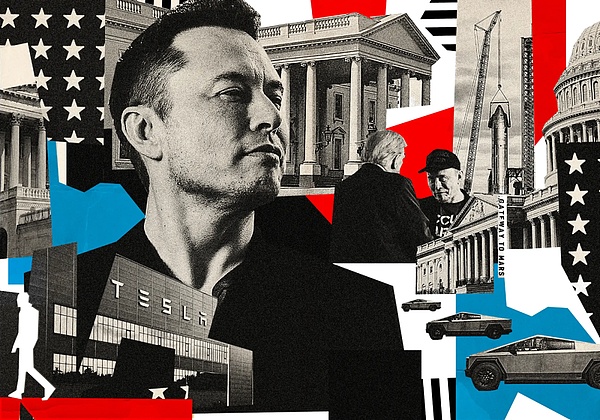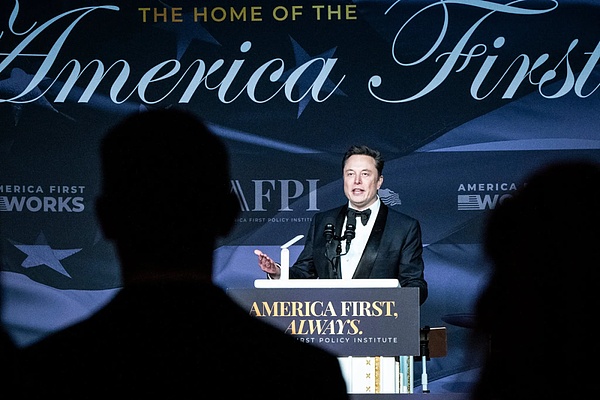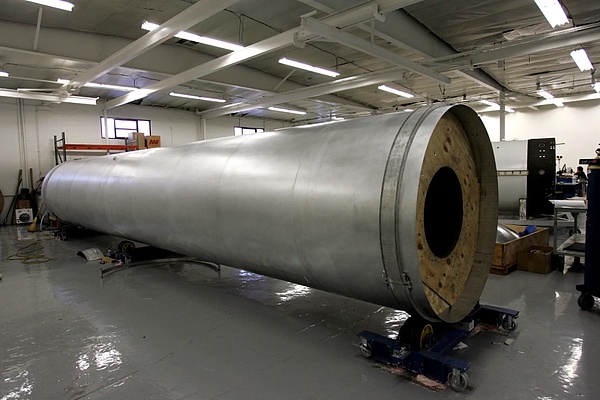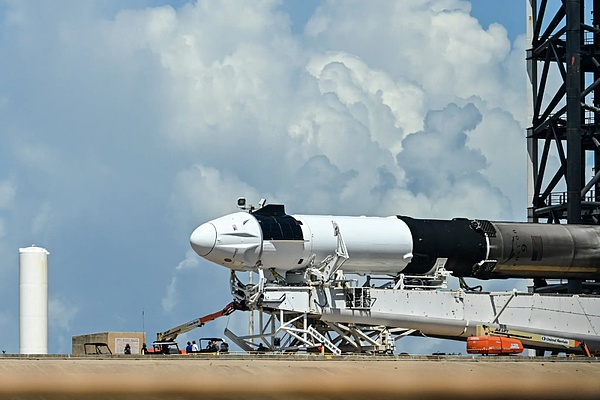Source: Tencent Technology
Key Points
① Through strict cost-cutting measures, Musk has built Tesla, SpaceX, and X into industry-leading companies.
② SpaceX has significantly reduced manufacturing costs and increased production speed by streamlining rocket design and removing redundant components.
③ Tesla has insisted on using cameras instead of radar sensors for autonomous driving technology, which can save 4/5 of the cost.
④ X not only laid off a large number of employees, but even stopped paying for office cleaning services, forcing employees to bring their own toilet paper to work.

According to The New York Times, Elon Musk has always maintained an almost ruthless attitude towards cost control of his companies. Through strict cost-cutting measures, he carefully examines every expenditure of the company, tending to over-cut to avoid any possible waste. During Donald Trump's second term as president, Musk's cost control strategies may be introduced into the operational management of the U.S. government.
On a Saturday morning in December 2022, Musk convened a meeting with the financial executives of Twitter (now renamed X) after completing the acquisition six weeks earlier. Musk found that even though Twitter had already laid off more than three-quarters of its employees, the spending of the remaining 1,500-plus employees was still out of control, which greatly dissatisfied him.
During the six-hour-long meeting, Musk reviewed the company's expenditure details one by one and demanded a detailed explanation for each item. He directly ordered the cancellation of some unnecessary expenses, such as executive car services. When an employee responsible for a large security contract tried to defend himself, Musk pointed out that Tesla's spending on the same task was far lower than Twitter's, and said the employee was no longer suitable to continue working at Twitter.
This meeting fully demonstrated Musk's consistent style in cost reduction, as he always closely monitors and personally participates in the cost-cutting work of his companies, including Tesla, SpaceX, and Twitter. Musk has taken cost reduction to the extreme, sometimes even at the expense of disrupting the normal operation of the company, and then repairing it later. When negotiating with suppliers, he ruthlessly lowers prices, and even bypasses traditional suppliers to manufacture cheaper components himself.
Jim Cantrell, SpaceX's Vice President of Business Development, once commented, "Musk used to be a god-like figure, but now he's more like a shrewd businessman. He is eager to cut all expenses to the bare minimum."
Now, Musk's net worth has exceeded $307 billion, and his meticulous approach is about to be applied to the U.S. government. Trump has nominated Musk and another loyal supporter, Vivek Ramaswamy, to jointly lead the newly established "Department of Government Efficiency (DOGE)". Trump stated that the department will drive "fundamental change" with the aim of achieving large-scale layoffs in government agencies by July 4, 2026, through cutting redundant government spending.

Musk is confident in this mission and has recently made multiple statements on X criticizing the inefficiency and waste of the U.S. government, indicating that he is ready to lead the government in sweeping reforms.
1 Musk "Sharpens His Knife"
Last month, at a rally in support of Trump, Musk promised to cut $2 trillion from the U.S. annual budget, which is about 30% of the total budget. He also proposed that government employees should submit a weekly list of their work achievements to prove their value. At the same time, Musk jokingly suggested that the U.S. government only needs 99 departments, not the current large number of over 400.
However, the prospect of Musk applying these cost-cutting methods that have been effective in the corporate world to the U.S. government has caused concern among some who have personally experienced his cost-cutting policies.
Lara Cohen, former Vice President of Marketing at Twitter, said, "When Musk and his team entered the company, they came with many assumptions and did not believe the team was valuable. They were unwilling to listen to the opinions of employees who had actually done the specific work, especially when these employees questioned their assumptions. This attitude led to many wrong decisions."
Although Musk's budget-cutting strategies have sometimes caused chaos and controversy, they have indeed helped at least one company avoid bankruptcy and propelled others to stand out in fierce market competition. He has successfully transformed Tesla and SpaceX into industry-leading companies, while maintaining a low-cost operating model.
At X, Musk has also launched a large-scale cost-cutting and efficiency-enhancing campaign. He has carried out massive layoffs, ignored office rent bills, and even personally ordered the shutdown of servers to accelerate the shutdown of data centers, thereby stopping the payment of rent. Employees, analysts, and users had all predicted that such cost-cutting would lead to the complete collapse of the social platform. However, although there have been some small-scale outages, the platform is still in continuous operation.
However, it should be pointed out that the difference between cutting the expenses of X, Tesla, and SpaceX, and making large-scale cuts to national spending is fundamental, as the latter is subject to strict legal and procedural constraints. The U.S. Congress is responsible for deciding the allocation of the federal budget, and any large-scale budget cuts could have far-reaching impacts on social welfare programs, which could provoke strong opposition from vested interest groups.
Nevertheless, the lack of disastrous consequences from Musk's cost-cutting efforts in companies has undoubtedly boosted his confidence. In a recent podcast interview, he stated, "I'm really good at improving efficiency."
2 "I'll Eat My Own Baseball Cap"
Since the beginning of his entrepreneurial career, Musk has shown an extraordinary sensitivity to costs. In 1995, when he founded Zip2, a startup that provided software services to newspapers, to maximize cost savings, Musk often stayed overnight in the office and even chose to bathe at the nearby YMCA to avoid paying apartment rent.
Later, Musk founded the company that later became the electronic payment giant PayPal, and in 2002 sold it to eBay for $1.5 billion. He used $100 million from this deal to create the private space company SpaceX, and believed he could manufacture rockets cheaper than the U.S. government.
SpaceX has significantly reduced manufacturing costs and increased production speed by streamlining rocket design and removing redundant components. According to Cantrell, the original fuel tanks for SpaceX's first rockets might have cost as much as $1 million. When he mentioned this issue to Musk, Musk was furious.

"It obviously touched a nerve with him, and he responded by saying, 'If it's going to cost that much, I'll eat my own baseball cap,'" Cantrell recalled. So Musk began to study the fuel tanks used in the truck and oil industries, exploring whether they might be cheaper than the storage tanks relied upon by large rocket companies. Ultimately, SpaceX decided to procure steel coils and weld them to manufacture the fuel tanks, at a cost of only tens of thousands of dollars.

This move fully demonstrates Musk's determination in cost reduction, and has also put some pressure on certain suppliers. For example, Chester Crone, an executive at aerospace component manufacturer Moog, revealed that Moog had previously sold a mechanical actuator to SpaceX for use in its early rockets. But after the initial purchase, SpaceX's management demanded that Moog significantly reduce the price.
After being rejected, SpaceX proposed to purchase the design drawings of the component and manufacture it on its own. Moog again rejected this request, and then SpaceX turned to other suppliers. Croan said: "If Musk is not satisfied with the supplier's price, he will definitely find an alternative solution in the end." He added that since then, Moog has rarely sold components to SpaceX. In 2010, SpaceX successfully launched the "Falcon 9" rocket. According to inflation-adjusted data, the research and development and manufacturing cost of this rocket is about $550 million. The Falcon 9 has now become the main rocket for all of SpaceX's commercial launches. According to NASA's estimate, if traditional aerospace technology is used, the same rocket system will cost as much as $4 billion. Musk's initiatives not only saved SpaceX a lot of money, but also promoted the flourishing development of the US commercial aerospace industry. Today, the cost of sending 1 kilogram of cargo into orbit is about $2,600, while the previous cost of the retired NASA space shuttle was as high as $65,000. After becoming the CEO of Tesla in 2008, Musk's low-cost strategy played a key role in driving the profitability of electric vehicles. Traditional competitors like Ford and General Motors often face losses when selling electric vehicles. Musk also uses cost-cutting measures to motivate employees. For example, when Tesla launched the Model X SUV in 2015, he ordered the cancellation of the company's free breakfast cereal in the office, a move that only saved a few thousand dollars, but conveyed a clear message: Musk's control over costs is comprehensive, and he will unhesitatingly cut even trivial expenses to ensure the company's survival in the face of difficulties. However, Musk's cost control strategy has sometimes also caused controversy. Especially in the choice of Tesla's autonomous driving technology, he insisted on using cameras to simulate the vision of human drivers, and rejected radar sensors. This choice was mainly based on cost considerations, as the cost of cameras is only one-fifth or less of that of radar sensors. In contrast, leading autonomous driving companies like Waymo use a combination of cameras, radar and lidar sensors. Musk's decision to use camera technology has raised safety concerns. The National Highway Traffic Safety Administration (NHTSA) is investigating Tesla's camera-driven autonomous driving system to determine whether it has caused four collisions, one of which resulted in a pedestrian fatality. Victims or their families have filed multiple lawsuits accusing Tesla's technology of failing to detect stopped signs, other vehicles and obstacles, leading to casualties. Despite these controversies, Musk still insists on his own path. In an investor call in April 2024, he reiterated: "The visual system is the core of human driving." In recent years, Tesla has been increasing its investment in artificial intelligence and other R&D projects. In the first nine months of 2024, Tesla's R&D spending has increased to $33 billion, compared to $29 billion in the same period last year. However, its revenue growth has been even faster, and its R&D spending as a percentage of sales has already dropped from 4.8% in 2021 to 4.5% this year. After acquiring Twitter, Musk took a series of drastic cost-cutting measures. He first fired four top executives, saving up to $128 million in compensation expenses. However, these executives have sued Musk, demanding severance pay. Firing executives was just the beginning of Musk's cost-cutting plan. He then demanded massive layoffs before paying the company's year-end bonuses in November 2022. Although the year-end bonuses were eventually paid, the number of Twitter employees was reduced by more than 75% in the first six months under his leadership. These layoffs almost reached all departments of the company, leading to a massive loss of talent and widespread uncertainty and chaos. In addition to layoffs, Musk has also worked to cut more than $500 million in non-labor expenses. He personally flew to Sacramento to shut down a Twitter data center and expressed anger at rent negotiations with the property owner. It was reported that he even personally unplugged a server on site, forcing employees to reconfigure the infrastructure during the holidays and ship the servers to the company's remaining two U.S. data centers. Although this series of changes led to multiple downtime incidents, it ultimately saved the company more than $100 million in annual expenses. However, Musk's cost-cutting measures sometimes seem too radical. He sometimes regrets cutting too deeply and tries to rehire some of the laid-off employees. For example, in April 2024, he rehired some Tesla employees, especially those responsible for building charging stations, who had lost their jobs in his previous layoffs. Nevertheless, Musk will not miss any opportunity to save costs. He even stopped paying the cleaning service fee for Twitter's offices in December 2022, leading to a deterioration of the office environment, overflowing trash cans, and a lack of toilet paper. In the company's New York office, some employees even brought their own toilet paper to work and hung it in the bathroom stalls using metal coat hangers.






